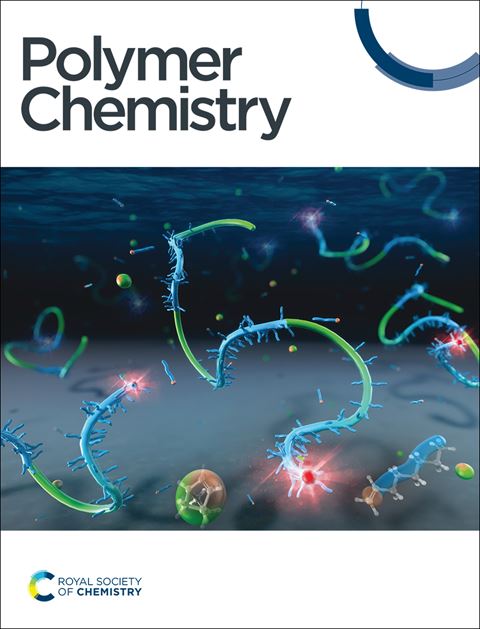含垂乙烯基氢化丁腈橡胶的制备及其交叉复分解后官能化反应
IF 3.9
2区 化学
Q2 POLYMER SCIENCE
引用次数: 0
摘要
氢化丁腈橡胶(HNBR)广泛应用于航空航天、汽车、石油化工、国防工业等领域。然而,其固有的耐油性和耐低温性之间的权衡,以及低温性能的不足,限制了其在极端环境中的使用。在这项研究中,我们报告了一种分子水平的设计策略,用于制备一种新型的含有悬垂乙烯基的HNBR衍生物(HENBR-V-Cx),该衍生物结合了增强的低温性能和后功能化潜力。以氢化环氧丁腈橡胶(HENBR)与不饱和脂肪酸单体为原料,经开环和酯化反应合成了HENBR- v - cx。这种模块化合成方法可以精确调整侧链结构,包括侧链长度、接枝密度和分子量,从而使玻璃化转变温度(Tg)从大约-20 °C降低到- 40 °C,从而显着提高耐低温性,同时保持耐油性。悬垂的乙烯基提高了硫化效率,允许在较低的固化剂负荷下实现高交联密度和抗拉强度(25.8 MPa)。此外,悬垂的乙烯基基团还可以作为后功能化的反应句柄。通过交叉复分解得到的氟化HENBR-V-Cx表现出更好的疏水性,水接触角(WCA)高达116°。通过氟化HENBR-V-Cx与纳米sio₂复合制备了WCA高达150.7°的超疏水涂层,具有很强的防腐和自清洁应用潜力。这项工作为HNBR改性建立了一个通用的、可扩展的平台,将分子设计与性能优化和应用驱动功能连接起来。本文章由计算机程序翻译,如有差异,请以英文原文为准。
Preparation of hydrogenated nitrile butadiene rubber with pendant vinyl groups and its post-functionalization via cross-metathesis
Hydrogenated nitrile butadiene rubber (HNBR) is extensively applied in aerospace, automotive, petrochemical, and defense industries. However, its inherent trade-off between oil resistance and low-temperature resistance, along with insufficient low-temperature behavior, restricts its use in extreme environments. In this study, we report a molecular-level design strategy for the preparation of a novel HNBR derivative containing pendant vinyl groups (HENBR-V-Cx) that combines enhanced low-temperature performance with post-functionalization potential. HENBR-V-Cx was synthesized via ring-opening and subsequent esterification of hydrogenated epoxidized nitrile butadiene rubber (HENBR) with unsaturated fatty acid monomers. This modular synthetic approach enables precise tuning of the side-chain architecture—including side chain length, grafting density, and molecular weight—allowing the glass transition temperature (Tg) to be reduced from approximately -20 °C to −40 °C, thereby significantly enhancing the low-temperature resistance while maintaining oil resistance. The pendant vinyl groups improved vulcanization efficiency, allowing high crosslink density and tensile strength (25.8 MPa) to be achieved with lower curing agent loadings. Furthermore, pendant vinyl groups also serve as reactive handles for post-functionalization. Fluorinated HENBR-V-Cx, obtained via cross-metathesis, exhibited improved hydrophobicity with a water contact angle (WCA) of up to 116°. A superhydrophobic coating with a WCA of up to 150.7° was fabricated by compounding fluorinated HENBR-V-Cx with nano-SiO₂, demonstrating strong potential for anti-corrosion and self-cleaning applications. This work establishes a versatile and expandable platform for HNBR modification, bridging molecular design with performance optimization and application-driven functionalities.
求助全文
通过发布文献求助,成功后即可免费获取论文全文。
去求助
来源期刊

Polymer Chemistry
POLYMER SCIENCE-
CiteScore
8.60
自引率
8.70%
发文量
535
审稿时长
1.7 months
期刊介绍:
Polymer Chemistry welcomes submissions in all areas of polymer science that have a strong focus on macromolecular chemistry. Manuscripts may cover a broad range of fields, yet no direct application focus is required.
 求助内容:
求助内容: 应助结果提醒方式:
应助结果提醒方式:


